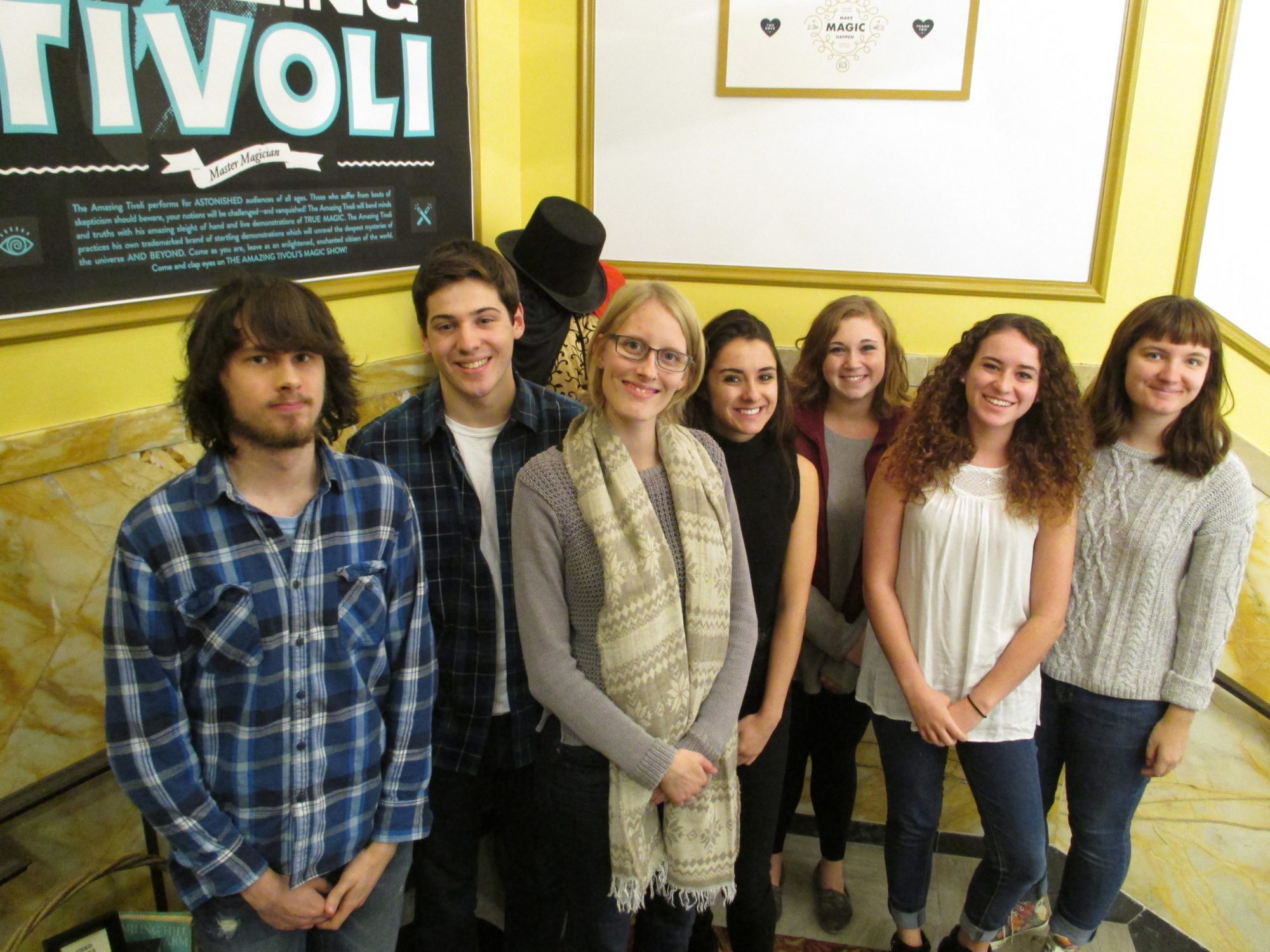Have you ever visited our space and wondered about its history? Looking at the grand, monumental structure wrapping around the corner of 14th Street and Park Road can take you back in time almost instantly. While 826DC and a few other organizations call this building home today, it was once the home of Tivoli Theater. Opened April 4, 1924, Harry M. Crandall’s Tivoli Theater was nicknamed “The Temple of the Arts” during the Golden Age of Motion Pictures. This “motion picture palace,” was designed in the Italian Renaissance Revival style, and was the largest theater in Washington, DC at the time. It was regarded as one of the most magnificent movie theaters in the country.
The next time you open the main doors to the 14th street entrance, imagine that you are a 1920’s movie-goer walking through a domed foyer into the extravagant “Auditorium Proper.” The original theater was equipped with comfortable lounges, a cozy fireplace, and a fireproof projection room. An orchestra, stationed on an elevator platform, greeted guests as they entered the stage floor. Ten two-story shops, office suites, and studio apartments completed this massive, million-dollar complex.
The city celebrated the grand opening of Tivoli Theater with a parade stretching from Pennsylvania Ave to Columbia Road and a carnival of street performers in front of the doors. The Washington Post welcomed the beautiful structure with an article that described the building as “a house of which not only Washington, but the nation, may be proud of.” The people of DC all gave this level of praise, and for the first Saturday movie showing, the theater’s 2,500 seats sold out within three hours. At this time, tickets were priced between 25 and 77 cents.
Unfortunately, Tivoli Theater did not retain this initial popularity. Although attempts were made to save the theater, increased deterioration and vandalism caused the doors to officially close in 1976. Mayor Anthony Williams’ administration encouraged the renovation of the building, and in 1999, renovations started in an attempt to revitalize all of Columbia Heights. The Development Corporation of Columbia Heights and the Horning Brothers teamed up to transform Tivoli Theater into Tivoli Square. The building was reopened in 2005, and finally in 2007, the structure was converted into what it is now.
Today’s Tivoli Square houses a number of businesses, organizations (like us!), condos, and restaurants inside the rebuilt interior of Tivoli Theater. With the exterior generally the same as it was in the 1920s, the building is still considered the only theater still standing in DC built by Thomas White Lamb, and the grandest theater ever created in the Crandall chain. While much has changed at 14th and Park, Tivoli Theater has kept its location, historic architectural elements, and spirit.
Harry Crandall was a local businessman and theater operator who dreamed of educating the population and providing a space for both cultural and civic activities. He believed that his theaters could operate in both capacities. Today we carry on Crandall’s artistic legacy in the form of youth writing programs. The space is still used to anchor community around great stories. Today students enter our space through Tivoli’s Astounding Magic Supply Company and meet fictional characters named Arneb the Great and the Great Tivoli. We tell students the tale of a disgruntled assistant named Arneb who studied magic under Tivoli himself. By imagining that there was once a famous magician performing in the theater, we have given a face to the name Tivoli and a touch of magic to inspire our young writers. This is our own, creative nod to Harry Crandall’s dream for this space, and keeping the undeniable spirit of the Tivoli Theater alive.
This piece of informal research was written by 826DC’s Communication Intern, Shannon Homa. Shannon is a senior at Alvernia University, where she studies Communications and Theology. Graduating in December, she is thrilled to be spending her last semester as an undergrad in Washington, DC putting her communication skills to use at 826DC.


